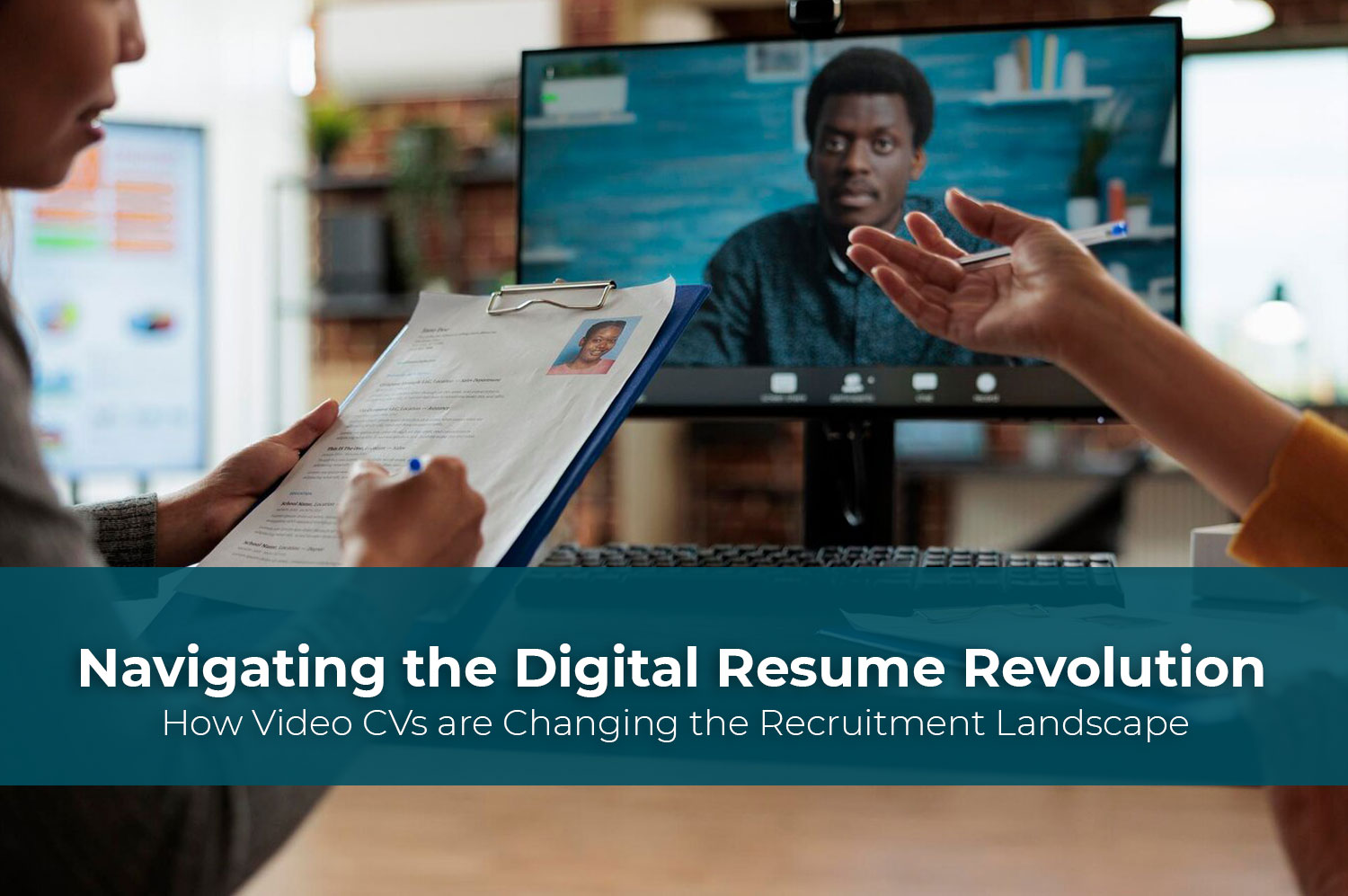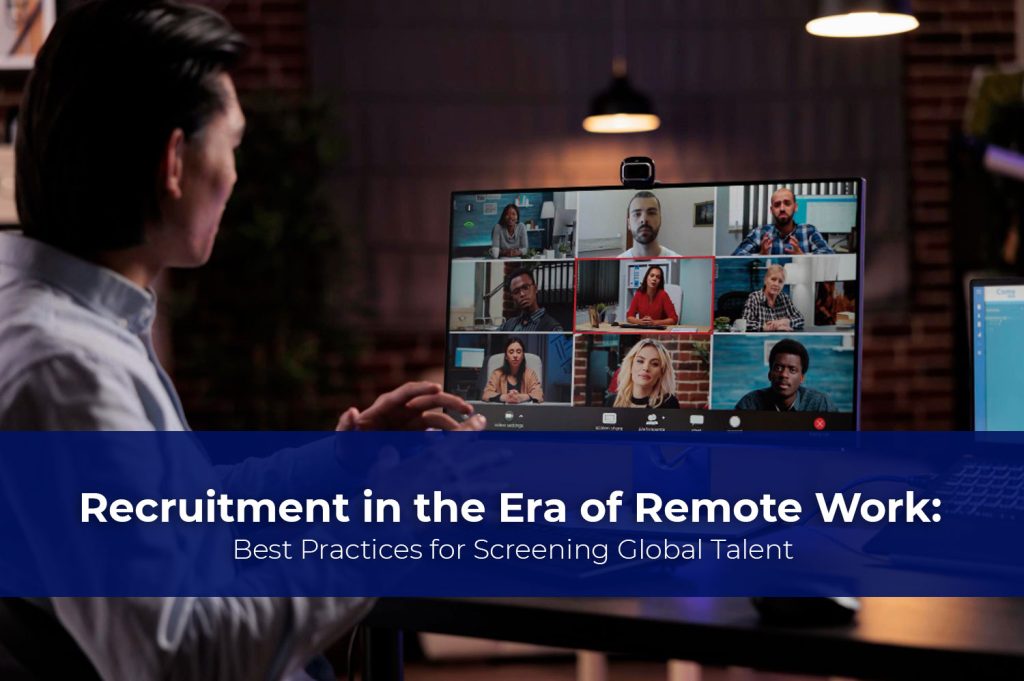
Table of Contents
ToggleIntroduction
Section 1: The Rise of Video CVs
The use of Video CVs has seen a significant surge in recent years. Here’s a look at the factors contributing to their popularity:
- Visual Appeal: Video CVs offer a dynamic and visually engaging way for candidates to present themselves, making a memorable first impression.
- Technology Accessibility: The widespread availability of smartphones and webcams has made it easier than ever for job seekers to create and share Video CVs.
- Globalization: In an increasingly global job market, Video CVs break down geographical barriers, allowing candidates to reach employers anywhere in the world.
- Competitive Edge: Job seekers are using Video CVs to stand out in a crowded job market, showing initiative and creativity.
Video CVs offer a dynamic and visually engaging way for candidates to present themselves, making a memorable first impression. The widespread availability of smartphones and webcams has made it easier than ever for job seekers to create and share Video CVs

Section 2: Benefits of Video CVs
Video CVs bring numerous advantages to both job seekers and employers:
- Personality Showcase: Candidates can convey their personality, enthusiasm, and communication skills, which are often missed on a traditional resume.
- Demonstration of Skills: Job seekers can visually demonstrate their skills, such as public speaking, problem-solving, or technical abilities.
- Efficient Screening: Employers can quickly assess a candidate’s suitability for a role, saving time and resources in the recruitment process.
- Global Talent Pool: Companies can tap into a diverse talent pool without the need for in-person interviews, leading to more inclusive hiring practices.
- Creative Expression: Video CVs allow candidates to get creative and innovative in their presentations, showcasing their unique qualities.
Section 3: Creating an Effective Video CV
Crafting a compelling Video CV requires careful planning and execution. Here are some essential tips:
- Script Preparation: Write a clear and concise script that highlights your qualifications, achievements, and why you are the perfect fit for the job.
- Professionalism: Dress appropriately, maintain good posture, and choose a clean and clutter-free background.
- Practice Makes Perfect: Practice your delivery to ensure confidence and fluency in front of the camera.
- Editing Skills: Basic video editing skills can help you create a polished and engaging Video CV.
- Length Matters: Keep your Video CV short and to the point, ideally within 2-3 minutes.
Section 4: The Employer Perspective
Employers are increasingly recognizing the value of Video CVs in the hiring process:
- Efficient Screening: Video CVs allow employers to quickly assess a candidate’s communication skills, confidence, and suitability for the role.
- Cultural Fit Assessment: Employers can gauge a candidate’s cultural fit within the organization through their presentation style and personality.
- Global Talent Acquisition: Companies can access a broader talent pool, especially when hiring remote or international candidates.
- Innovative Recruitment: Embracing Video CVs showcases a company’s willingness to adopt innovative recruitment methods, attracting tech-savvy candidates.
Section 5: The Future of Recruitment with Video CVs
As technology continues to advance, Video CVs are likely to become even more prominent in the recruitment landscape. Here are some future possibilities:
- AI Integration: Artificial intelligence could be used to analyze Video CVs, helping employers identify the most suitable candidates more efficiently.
- Interactive Video Interviews: Video CVs may evolve into interactive interviews, allowing employers to ask specific questions and receive tailored responses.
- Augmented Reality: AR could enable candidates to virtually demonstrate their skills or showcase their work in real-time during a Video CV.
- Video CV Platforms: Specialized platforms may emerge to host Video CVs, making it easier for employers to discover talent.
- Enhanced Personalization: Video CVs may become more personalized, tailored to specific job openings and industries.
Section 6: Potential Challenges of Video CVs
- Bias and Discrimination: Video CVs can inadvertently introduce bias based on appearance, accent, or presentation style, which may lead to discrimination concerns.
- Technical Issues: Candidates may face technical difficulties when recording or uploading their Video CVs, potentially disadvantaging those with limited access to technology.
- Time-Consuming: Reviewing Video CVs can be time-consuming for employers, especially when dealing with a large number of applicants.
- Privacy Concerns: Candidates may be uncomfortable sharing personal details or appearing on camera, raising privacy issues.
- Inequality: Not all candidates may have the same level of comfort or proficiency in creating Video CVs, potentially creating inequality in the recruitment process.
Section 7: Best Practices for Employers Using Video CVs
- Provide Clear Instructions: Offer candidates clear guidelines on what you expect in their Video CVs, such as content, length, and format.
- Use Video CVs as a Supplement: View Video CVs as a supplement to traditional resumes, not a replacement, to ensure a comprehensive evaluation.
- Diverse Assessment: Be mindful of potential bias and strive for a diverse assessment panel to minimize discrimination risks.
- Support and Accessibility: Offer technical support for candidates encountering difficulties and ensure accessibility for all applicants.
- Transparency: Communicate with candidates about the use of Video CVs in your recruitment process and address any privacy concerns.
Section 8: Legal and Ethical Considerations of Video CVs
The adoption of Video CVs in recruitment raises various legal and ethical considerations that both job seekers and employers should be aware of:
- Privacy Regulations: Depending on the jurisdiction, there may be privacy regulations that govern the collection and use of personal information in Video CVs. Employers must ensure compliance with these laws when requesting or reviewing Video CVs.
- Anti-Discrimination Laws: Video CVs have the potential to introduce bias and discrimination into the hiring process, leading to legal challenges. Employers must be vigilant in avoiding discrimination based on factors such as age, gender, race, or disability.
- Consent and Transparency: Employers should obtain clear and informed consent from candidates before requesting a Video CV. Candidates should fully understand how their Video CV will be used in the hiring process.
- Accessibility: Employers must ensure that Video CVs are accessible to all candidates, including those with disabilities. Providing accommodations and alternative submission methods may be necessary.
Conclusion

Employers should obtain clear and informed consent from candidates before requesting a Video CV. Candidates should fully understand how their Video CV will be used in the hiring process.





























